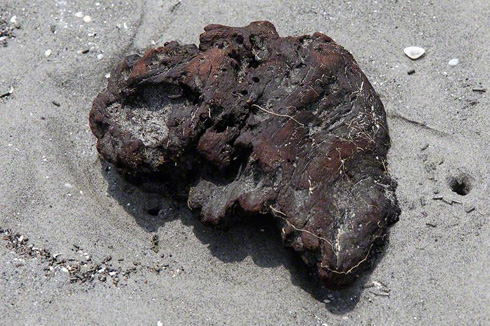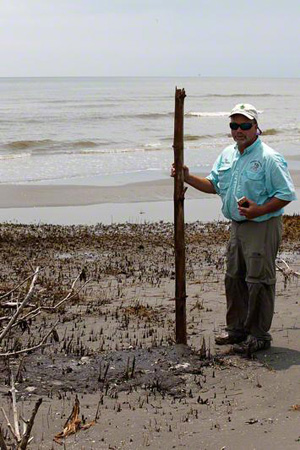The Starving Writer Contest GuidelinesWe are excited to announce the Starving Writer quarterly contest is now accepting entries. We want your work. We want to give all writers the opportunity to win some money, get published and receive constructive feedback on their work. So submit away. Our judges are hungry for manuscripts to read.
Entry Fee - $20. includes one year subscription to the Starving Writer Review and critique of entry.
Categories - Adult fiction, non-fiction, juvenile fiction.
Prizes - First $100 Publication to first place winner in each category. Certificate to all winners.
Word count: 3000 maximum.
Please submit two copies of manuscript, double-spaced, word count in upper right corner.
Include cover letter with name, address, phone number, e-mail, manuscript title, word count, and category.
Send SASE for return of critique and list of winners.
Judging is double-blind with third judge as a tie breaker.
Deadline November 20, 2010
Make Checks Payable to: The Starving Writer
Send Entries to:
The Starving Writer
4230 SE King Rd #99
Milwaukie, OR 97222We adhere to the Contest Code of Ethics.
Contest WinnersQuarter 2 2010 Deadline May 15th
Six Shades of Gray by Jaime Liddick
Walk On by Helen Peppe
Late to Poetry’s Table by Sharon Wood Wortman
Olympic Champion Charlie Green’s Long Run to Faith by Robert B. Robeson
Welcome to Canada by John Graham – Pole
The Burp Bowl by Deborah “Bam” Schildkraut
Transformed! From the Inside Out by Jane Goldenberg
Race, Culture and Aesthetics October 8-10, 2010 – Full Schedule
* These events will be streamed live on the web. Check back soon for website details and how to watch the Micro-fest from afar!
Back to the Atlanta Microfest home
FRIDAY OCTOBER 8
4 pm – Town Hall (part one) at Horizon Theater*
Part participatory installation – part performance – part dialogue artists from M.U.G.A.B.E.E., Carpetbag Theater, Alternate ROOTS, Progress Theatre, Out of Hand, and d-Projects will set the stage for a weekend of conversations and performance about Race, Culture and Aesthetics.
5:30 – Opening Reception at 7Stages
Lite dinner and cocktails provided
7pm – Youth Ensemble of Atlanta presents Yeah, I Said It at 7Stages
Set in urban Atlanta, a group of inner city youth are confronted by “visitors of a different sort” as they invade Metro Atlanta’s Transit System—MARTA! Filled with humor, heart-pounding music and wickedly funky choreography, Yeah, I Said It! brings the secret issues of society to the forefront.
10:30pm – Dad’s Garage and E Period (aka Chris “Cocktails” Cornell) at Dad’s Garage
This evening hosted by Chris Cocktails and Kevin Gillese will feature: spoken word, improv comedy, and true stories from the hearts and minds of your goodly hosts. Interactive, insightful and possibly insane, this night will bring together disparate elements of the performing community into one room at Dad’s Garage Theatre.
SATURDAY OCTOBER 9
9 am – Youth Ensemble of Atlanta Performance Response
Two local theatre makers will offer their response to Yeah, I Said It. Facilitated by Alternate ROOTS.
10am – 1pm – ArtSpot Productions: Songs of My Father Little 5 Points Community Center
Kathy Randels and Rebecca Mwase will lead a workshop that explores the stylistic differences between singing in black and white communities of faith, specifically the Baptist tradition. Through structured and improvisational group singing, participants will explore methods of building community and ensemble generation of vocal scores. Through story circles participants will discuss assumptions about faith, spiritual practice, and race – and how these experiences apply to creating solo and group performance. No musical or religious experience is necessary. www.artspotproductions.org
10am – 1pm – Out of Hand: Creating New Work Little 5 Points Community Center
Whether you’re a seasoned professional or a secret admirer, Out of Hand will help you get unstuck, take risks and collaborate with other artists by making new work very fast in teams. Discover ways to communicate with your body, respond to impulses, and move with others, unlocking new sources of inspiration. Workshop participants will get to play a part in The Race Show that night! www.outofhandtheater.com
10am – 1pm – Youth Collision: Youth Creates and Youth Ensemble of Atlanta Collide!*
The Youth Ensemble of Atlanta and 7Stages Youth Creates will be in the room together for the first time sharing their methods and creating material about the theme of the festival. Participants are invited to observe this collision of different aesthetics! Workshop is 2 parts: Saturday and Sunday morning 10-1pm.
2-4:30pm – Town Hall (part 2) featuring Elizabeth Omilami, Del Hamilton, Michael Simanga*
This Town Hall meeting is an opportunity to come together and understand how these issues are playing out in our arts ecology, to talk with some of the veteran theatre makers of our community, to create some strategies and relationships to continue our good work and make even better work.
In the first part of this meeting we will talk with our well-respected panelists and listen to them discuss their experiences dealing with the issues of race and culture in their work. In the second half the group will discuss one Atlanta specific issue around race, culture and aesthetics in the arts community: its origin, its current state and strategies for resolution.
6pm- Progress Theatre presents PEACHES 7Stages
Inspired in part by Nina Simone’s classic song, “Four Women,” PEACHES tackles head-on the stereotyping of African American female identity from slavery times to the present. Alluding to both academic and popular discourse on race in America, Progress Theatre fuses elements of music, essay, traditional and non-traditional theater into a piece presenting a rich, complicated picture of Black female experiences in contemporary America. www.progresstheatre.com
9pm – Out of Hand Presents The RACE Show! 7Stages
The SHOW! is based on the ‘Ten-in-One’ freak show, an ever changing exhibit of human oddities, riffing on classic carnival sideshow. For Micro-Fest Atlanta, Out of Hand lays down all new material in this special edition, The Race SHOW! Nothing is off limits. You decide how far we go. www.outofhandtheater.com
SUNDAY OCTOBER 10
9 am – Out of Hand Performance Response
Two local theatre makers will offer their response to The SHOW! Facilitated by Alternate ROOTS.
9am – Progress Theatre Performance Response
Two local theatre makers will offer their response to PEACHES. Facilitated by Alternate ROOTS.
10am-1pm
Kamal Sinclair: Theater at Theory: Post Traumatic Slave Syndrome Little 5 Points Community Center
Post Traumatic Slave Syndrome is a play based on the research and theory of sociologist/psychologist Dr. Joy DeGruy, written and directed by Kamal Sinclair and co-directed by Obie Award-winner Robbie McCauley in 2001. The content deconstructs victim-perpetrator dynamics and opens new channels of communication between Black and White Americans, as a means of healing the wounds of multi-generational trauma caused by the legacy of slavery and institutionalize racism. The aim of the playwright was to take Dr. DeGruy’s sociological/psychological theory, associated true stories and historical images and actualize them through the aesthetics of performance and the conventions of theatre, so they become visceral and dynamic for audiences (who often labeled the play “healing theatre”) the goal was to expand awareness of some critically debilitating social ills for both Black and White Americans and promote individual/collective healing from our divisive history. Participants in this workshop will play parts in a reading of the script; share their perspectives on the relevancy and irrelevancy of this work a decade after its inception; discuss strategies for using the aesthetics of performance to make sociological theory live on stage; and discuss the effectiveness of theatre as a healing mechanism when integrated with the healing sciences.
10-1pm HIP-HOP AND HISTORY : Quic Rojas – Zulu Funk Lordz 7Stages
This 3 hour class will take participants through a work out in hip-hop as well as provide a historical context for the roots of the movement. Be prepared to sweat.
2pm – D-Projects present NE 2ND AVE 7Stages*
This one-man play conveys, with poignancy and humor, the profoundly rich and textured mix of Miami, in which distinct cultures emerge and cross-pollinate. NE 2nd Avenue brings voice to Miami’s marginalized urban populations, exploring underlying issues of racism and social injustice, acknowledging the differences among us and ultimately discovering the common threads that bind us together. www.teocastellanos.com
4pm – Closing Celebration*
What will be Atlanta’s Call to Action? This closing celebration will highlight activities from the weekend and feature some provocative challenges that Atlanta would like to make to the national theatre field.


























